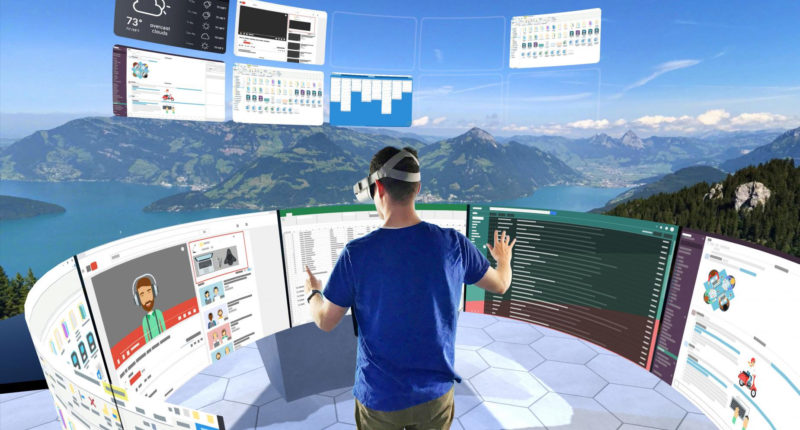Meta is trying to replace your laptops with virtual reality (VR) head-mounted displays (HMDs) and hopes that future HMDs will make users communicate and collaborate more effectively in the metaverse. However, a recently published study demonstrates that current consumer-available devices, like Oculus Quest 2, are not pleasant and productive to work with for an extended period of time.
A research team conducted the research at Coburg University in Germany. The researchers noticed that previous studies were based on artificial tasks prescribed by researchers, and the experiment duration was not long enough to make sure participants gained sufficient familiarity with working in VR. Therefore, they designed an experiment to quantify the effects of working VR with immersive HMDs (Oculus Quest 2) for one week. Sixteen participants were recruited and asked to do their everyday work in VR for eight hours a day over five days. The results, as expected, showed that VR was rated lower compared to the physical setting across many indicators. For example, the perceived workload was significantly higher in VR (35%), along with higher frustration, negative affect, anxiety, and eye strain. The good thing was that the researchers observed users adapting to the VR working condition over time. For example, within a day or two, users’ rating of the experience of working in VR improved.
Though the results show more negative aspects of working experience in VR, there are, indeed, many reported benefits of working in VR. For example, users could tailor their virtual spaces to match their work situations, block distractions from the real world, and keep privacy. Further, it could be more authentic to meet and collaborate with people in VR than in Zoom sessions considering the body language and physical proximity. Yet, uncomfortable user experience and affordable consumer-ready HMDs are still significant barriers to the widespread adoption and use of HMDs in the working space.
The results also indicate some possible directions for future products. Some participants said they favored isolation as it brought greater focus, separation, and privacy. However, others considered such isolation inconvenient because they still needed to interact with people in the physical world, and it was hard for them to tell who was nearby while wearing the HMDs. Therefore, a device that could enable a smooth transition between the real and virtual worlds is highly expected because not all colleagues at the office will enter the virtual spaces.
In addition, apps, especially those for collaboration, should be available across different platforms, both immersive and non-immersive ones. During the experiment, two participants dropped out of the experiment on the first day due to migraine, nausea, and anxiety. Therefore, those who are not ready or not comfortable working in VR need an alternative way to enter VR, either via PC or mobile devices.
In a word, working in VR may become mainstream in the future for many people concerning the benefits and the technical development. However, the needs of those who are not ready for metaverse should also be considered.










Comments are closed.